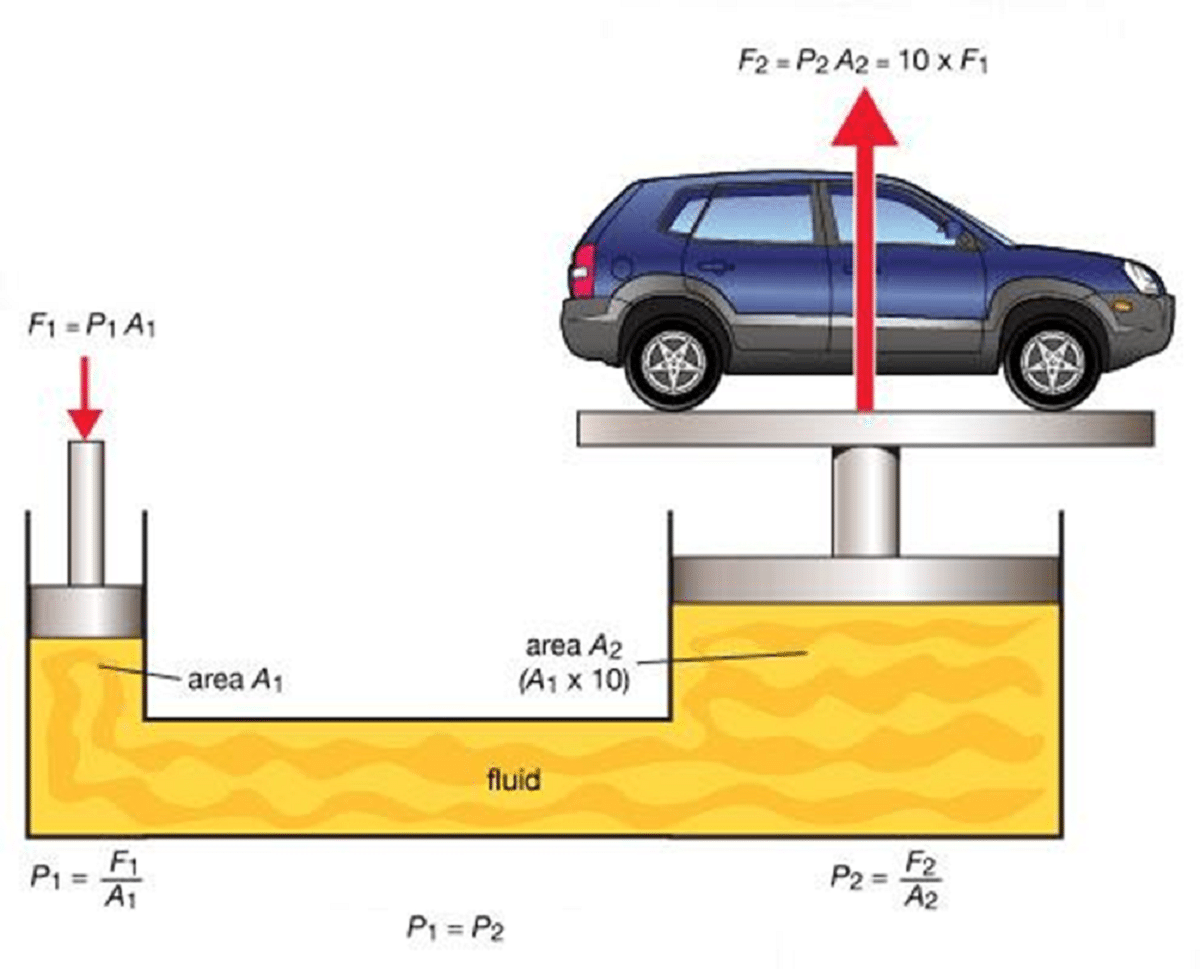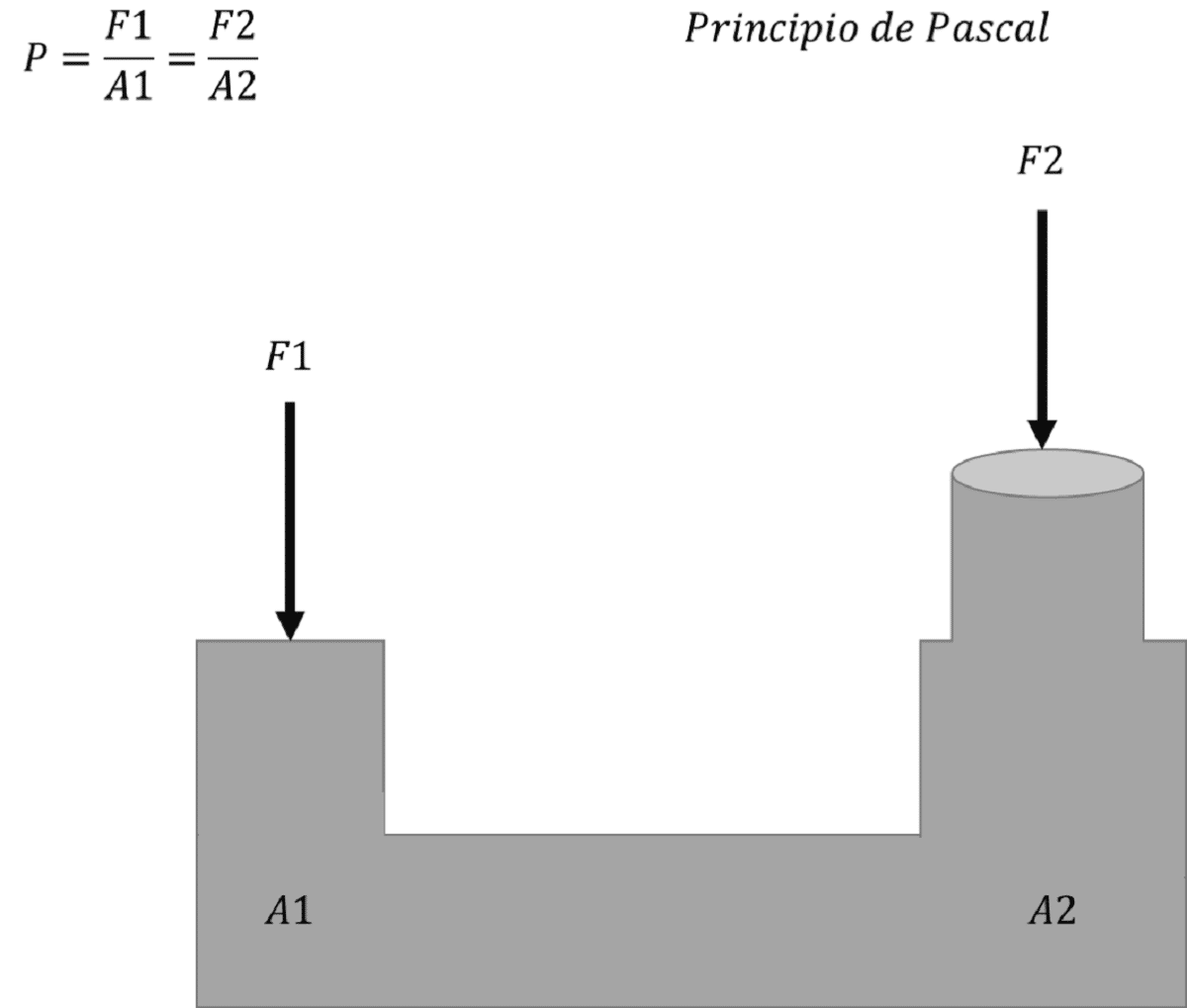
In science there are numerous principles that serve to explain some behaviors in everyday life. One of these best-known principles is the Pascal's principle. It is a physical law that explains how pressure behaves in fluids. It is very important to understand how many things work in our daily lives, such as the brakes of a car or the hydraulic system of a crane.
In this article we are going to tell you everything you need to know about Pascal's principle, its importance and the advances of science.
Pascal's principle

Pascal's principle tells us that if we apply a pressure at a point of an enclosed fluid, that pressure will be transmitted evenly in all directions and throughout the fluid. That is, if we press a liquid at one end of a closed container, the same force will be distributed equally in all parts of the liquid and on all the walls of the container.
For example, imagine that you have a balloon filled with water. If you squeeze it at one end, the pressure will be transmitted through the water and the balloon will deform in all directions. If you press harder, the deformation will be even greater. This is because water is a fluid and follows Pascal's principle.
This law is also very important in engineering, since allows you to create hydraulic systems that can transmit large amounts of force and energy with very little effort. For example, in a crane hydraulic system, a fluid is used to transmit the force from the engine to the crane arm, allowing heavy objects to be lifted with relative ease.
Application
Pascal's principle applies to devices that need to apply small or comfortable forces to achieve robust results. For example, the most common example of Pascal's principle is the principle of hydraulic pressure machines, but we can also mention the hydraulic brake of the car, the load lifter, the hydraulic jack, the hydraulic steering of the vehicle, and even on the chair. of the dentists. Pascal's principle is very important in the study of hydrostatics.
Hydrostatics is a branch of fluid mechanics, and studies fluids at rest and the pressure exerted on them. Hydrostatics is very important for engineering and is used for the storage, transport and use of fluids.
Examples of Pascal's Principle
Prensa hidráulica
The principle of Pascal It is very usefully applied in the hydraulic press. A hydraulic press is a machine used to apply a great force to an object, such as a sheet of metal or a block of wood. This is accomplished through the use of a liquid that is transmitted through a piping system.
The hydraulic press works thanks to Pascal's principle, which says that pressure is transmitted uniformly in a liquid. The press has two pistons, one small and one large, connected by a tube filled with a liquid, such as oil or water. When we apply a force on the small piston, a pressure is generated that is transmitted throughout the liquid and reaches the large piston.
Since the large piston has a larger surface area than the small piston, the force applied on the small piston is multiplied on the large piston. For example, if the large piston has a surface area 10 times larger than the small piston, the force applied on the small piston will be multiplied by 10 on the large piston. This means that we can apply a much greater force on an object using a hydraulic press than with our own physical strength.
Hydraulic presses are used in many applications such as the manufacture of metal parts, engine repair and the compression of construction materials. In addition, they are very useful in situations where a great force is required to be applied with precision, since we can control the amount of pressure that is applied to the object.
Hydraulic jack

The principle of Pascal also applies to hydraulic jacks, a very useful tool for lifting heavy objects, such as a car. A hydraulic jack is made up of two cylinders connected by a tube filled with liquid. One of the cylinders is larger and is connected to a flat platform on which the object to be lifted rests, while the other is smaller and is connected to a crank used to apply the force.
When a force is applied to the crank, a pressure is generated in the fluid that is transmitted evenly to the entire hydraulic system, including the large cylinder that supports the object to be lifted. The force applied on the small cylinder is multiplied on the large cylinder due to the difference in size between the two cylinders, allowing very heavy objects to be lifted with relative ease.
Pascal's principle is applied in the hydraulic jack in the same way as in the hydraulic press, ensuring that pressure is transmitted evenly to the entire hydraulic system and that the force is multiplied in the large cylinder to lift heavy objects.
Hydraulic jacks are very useful in the automotive industry, as they allow a vehicle to be lifted for repairs and maintenance. In addition, they are very useful in other jobs that require heavy lifting, such as construction.
Formulas

As expected, the prince of Pascal must be calculated using mathematical formulas. To calculate the pressure in a fluid being transmitted by a hydraulic system, the formula P = F/A is used, where P is the pressure, F is the applied force, and A is the area of the surface where the force is being applied. This formula allows us to calculate the pressure at any point in the hydraulic system.
Another important formula related to Pascal's principle is the law of conservation of energy. This law establishes that the total energy in a closed system is conserved, that is, that energy cannot be created or destroyed, it can only be transformed.
In a hydraulic system, energy is conserved since the force applied at one point is transmitted through the liquid and is transformed into energy at another point in the system. This means that the energy applied at one point in the hydraulic system is equal to the energy obtained at another point.
I hope that with this information you can know more about the Pascal principle and its characteristics.